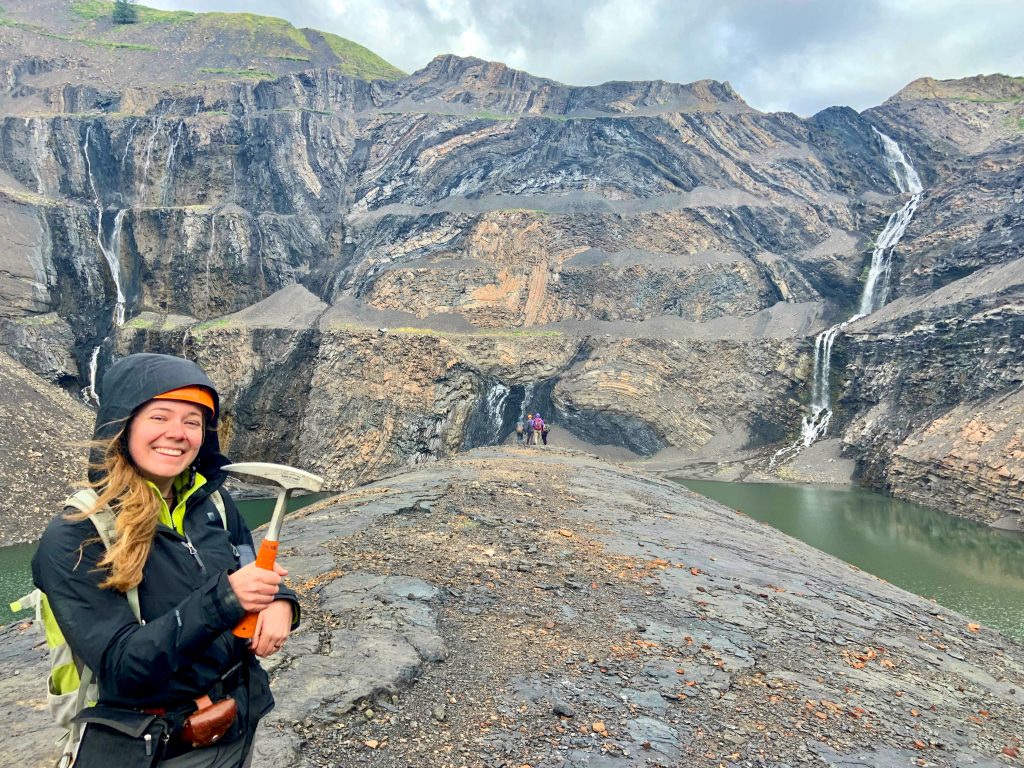Biography:
Samantha completed her BSc in geology from the University of Calgary in 2019. Through this time, her passion for siliciclastic rocks led to several student internships in the Canadian energy industry. These internships further solidified her enjoyment of petroleum geosciences and led her to pursue an MSc in geology at the University of Calgary. In spring 2020 Samantha competed as team lead for the UCalgary Imperial Barrel Award team where they placed first in the Rocky Mountain/Canada competition and third globally. Samantha’s research aims to understand how hydrogen sulfide relates to the structure and stratigraphy of the Montney Formation in NE British Columbia.
Project: Structure and Stratigraphy of the Triassic Montney Formation and its Relationship to the Occurrence of H2S in North-Eastern British Columbia, Canada
Locally high concentrations of harmful hydrogen sulfide (H2S) are present in the Lower Triassic Montney Formation. However, there are few published studies on the H2S origin and distribution. Recent petrographic and isotopic analyses show sulfate-rich fluids sourced from underlying Devonian evaporites contribute to Montney H2S generation, implying fracture system fluid migration. Thus, mapping the structures/fracture systems and understanding stratigraphic permeability distributions is crucial in predicting elevated H2S. This project integrates multiple previous Montney studies including geochemistry, stratigraphy, sedimentology, and structural data. Stratigraphic and structural controls on H2S distribution in NE BC will be evaluated by constraining H2S test and production data within a created stratigraphic framework. Additionally, this project supports the development of a formation-wide H2S map, to be utilized by industry and academia for H2S-risk prediction and mitigation.
